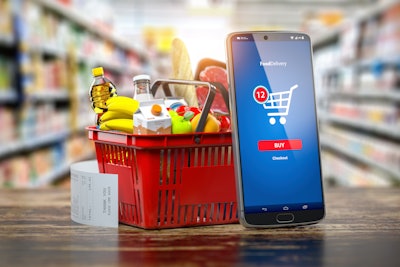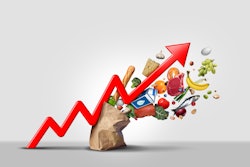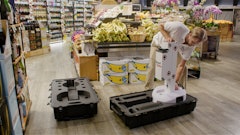
U.S. online grocery sales totaled $9.8 billion for June, a 27.6% increase compared to last year, according to the Brick Meets Click Grocery Shopper Survey sponsored by Mercatus.
Meanwhile, in-store grocery sales slipped during June due to a combination of the surge in online sales and shifts in where households primarily buy their groceries.
“June’s strong results signal that this sustained surge in e-grocery sales, particularly in delivery, is likely to continue because delivery is now effectively free for many users,” says David Bishop, partner, Brick Meets Click. “This evolving dynamic leverages membership and subscription programs to eliminate one of the top historical barriers to using an e-grocery delivery service.”
Key takeaways:
· Delivery’s 29% year-over-over (YOY) growth in monthly sales, which totaled $3.8 billion in June, was due largely to strong growth in its monthly active user (MAU) base, coupled with gains in order frequency and average order value (AOV). Pickup sales jumped nearly 25% to $4.3 billion, driven by solid increases in its MAU base, order frequency, and AOV vs. last year. Ship-to-home’s sales surged nearly 33% to $1.7 billion as its MAU base expanded even faster than delivery’s, and its order frequency also spiked significantly higher than June 2024.
· In terms of sales share, delivery captured another 45 basis points (bps) in June compared to last year, finishing the month with more than 38% of e-grocery sales and building on its 2024 share gain of 330 bps. In contrast, pickup contracted for the second straight year as its share shrank 110 bps to 44% for June. Ship-to-home, which captured nearly 18% in June, also posted a second straight year of share gains, aided by the uptick in membership/subscription program participation.
· While e-grocery posted another month of exceptional results, overall grocery spending per household during the final week of June rose only 2.5% vs. last year. Excluding online sales, this suggests that in-store grocery sales across all retail formats declined vs. June 2024.
· Relative to building greater engagement with their respective MAU bases, grocery (which includes supermarkets and hard discount) closed about half of its repeat intent gap behind mass retailers in June. Although grocery reported stronger YOY improvements on this measure for both delivery and pickup, respectively, mass maintains a more than 10-point advantage in delivery, as mass retailers continue to attract new online customers who primarily buy groceries at a grocery banner.
“If you’re a regional grocer, these results should be a wake-up call: Take control of your customer data and put it to work to stay competitive,” says Mark Fairhurst, chief growth marketing officer, Mercatus. “A year of aggressive delivery promotions and a sharp rise in cross-shopping between supermarkets and Walmart highlight the urgent need to defend your customer base on every channel by owning the relationship at each touchpoint and building a smarter, more connected experience to drive growth and stay relevant.”





















